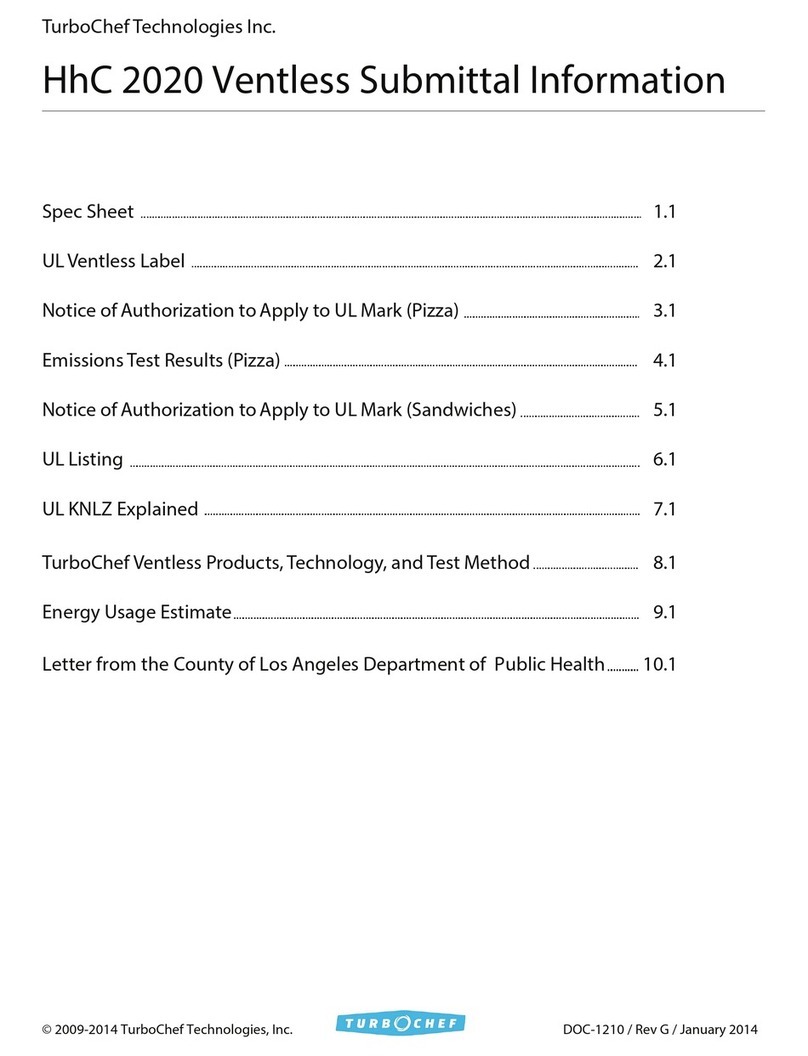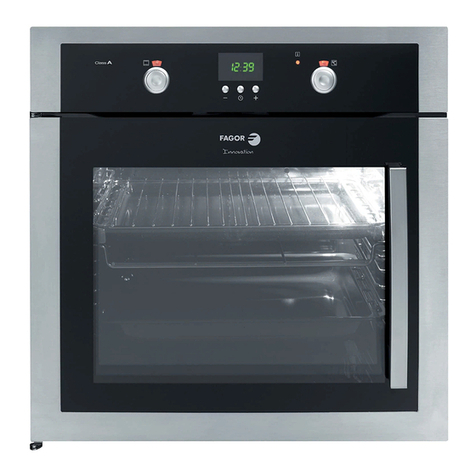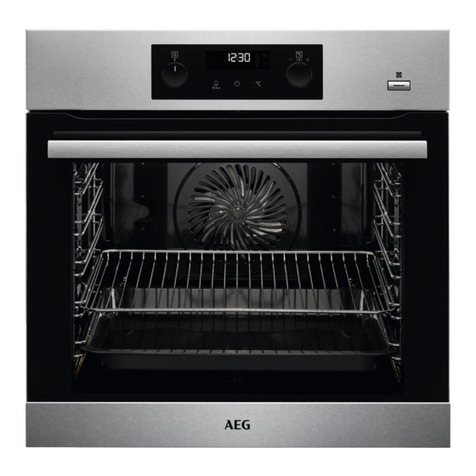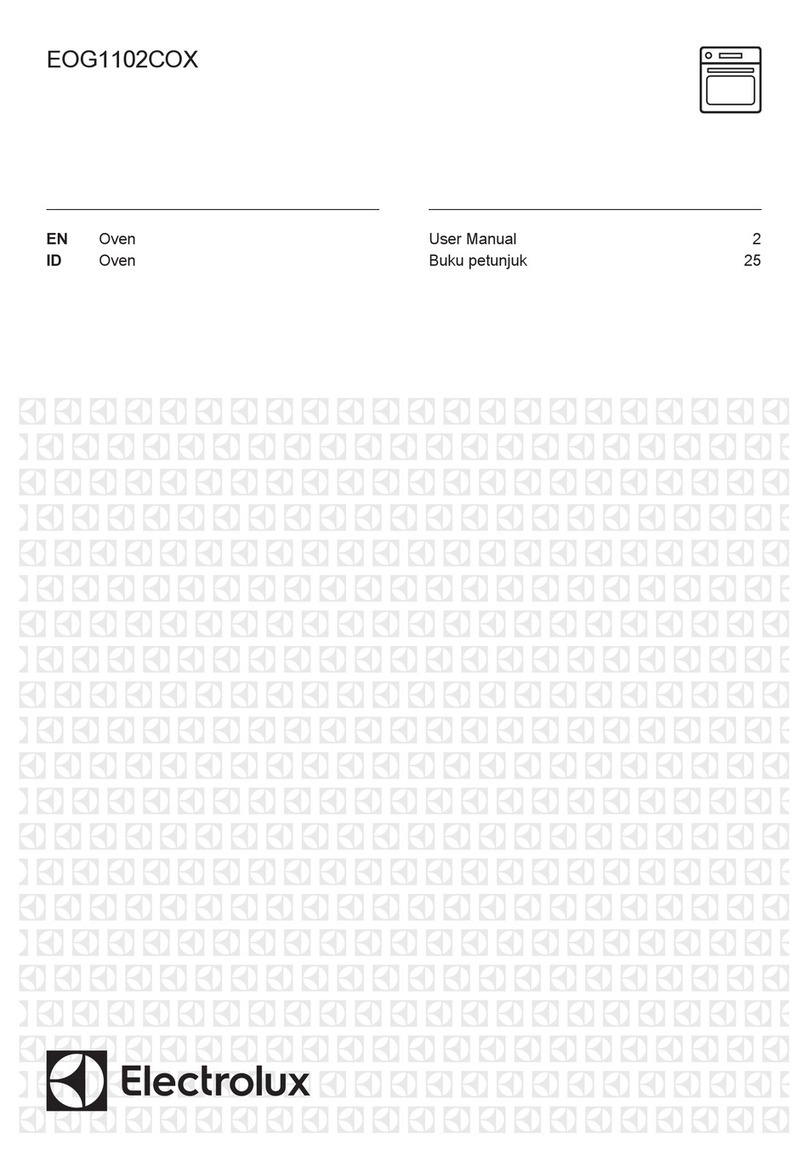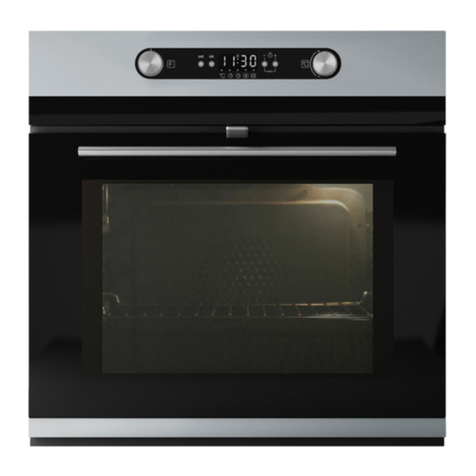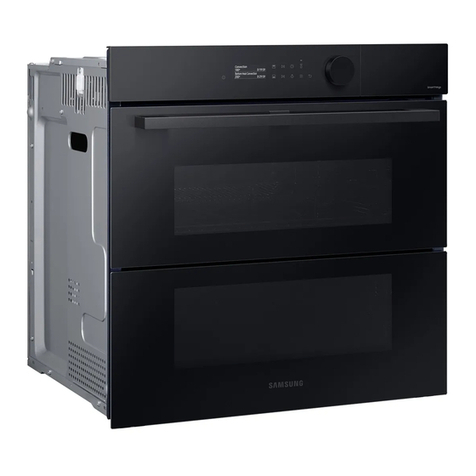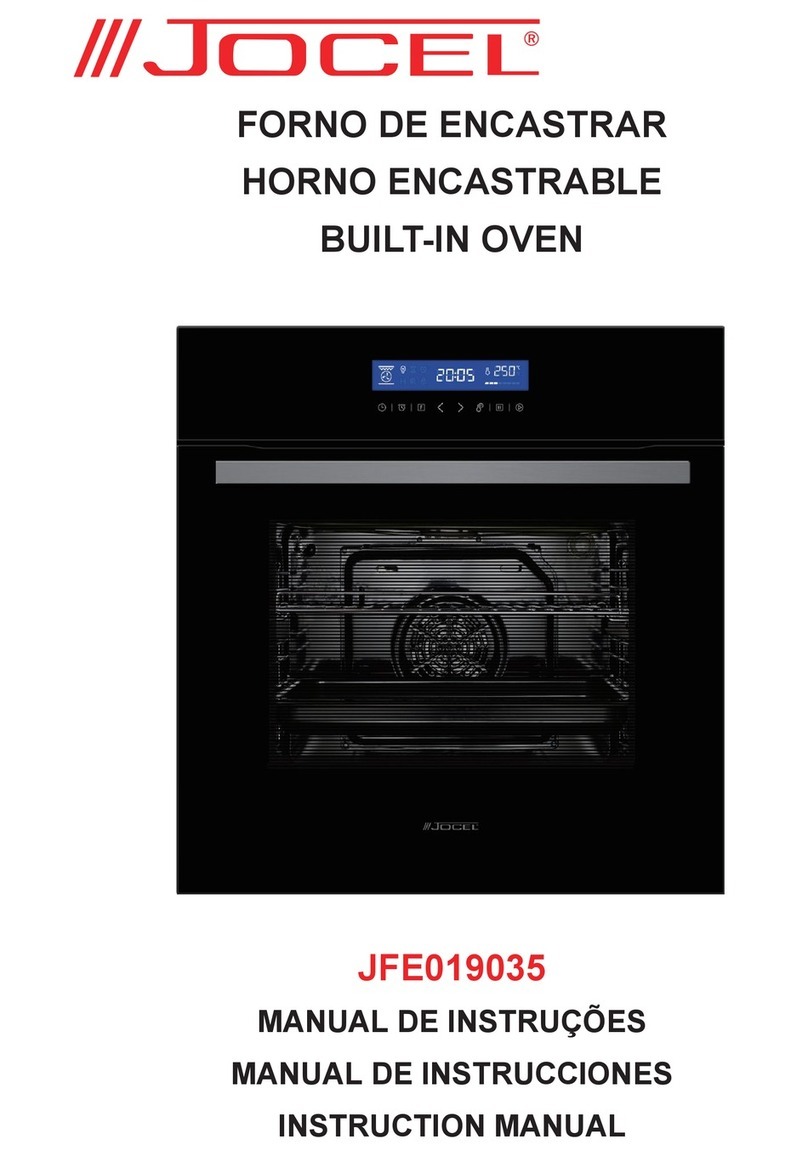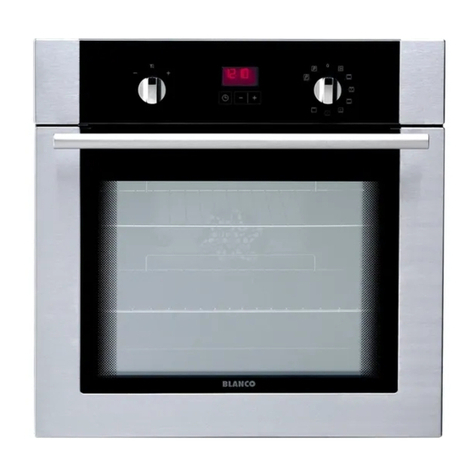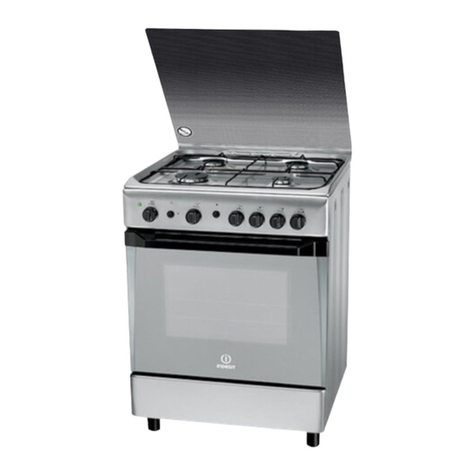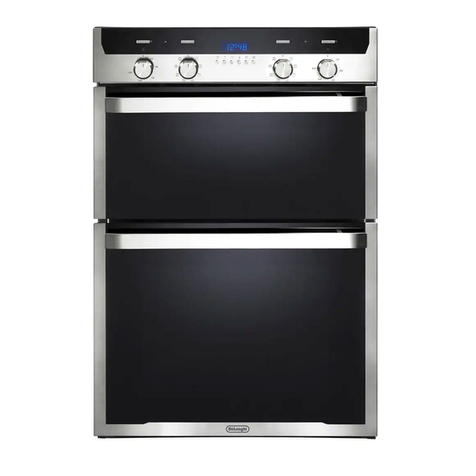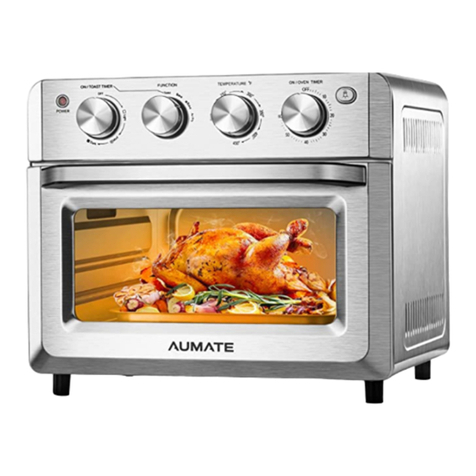Heta SCAN-LINE 800 User manual

1
OPERATING AND INSTALLATION
INSTRUCTIONS
DANISH DESIGN . DANISH QUALITY . DANISH PRODUCTION
www.heta.dk
EN
SCAN-LINE 80 XLB
BAKING OVEN
APPROVED FOR USE IN SMOKE CONTROL AREAS WHEN
BURNING DRY WOOD LOGS OR AUTHORISED FUELS

2
1
BETJENINGS- OG
OPSTILLINGSVEJLEDNING
DANSK DE SIGN . DANSK KVALIT ET . DANSK PRODU KTION
www.heta. dk
DK
SCAN-LINE 80 XLB BAGEOVN
With your new wood stove you should find the following:
Operating /
Instruction manual
Heta glove
Q.C. check
Data plate
Heta A/S
Jupitervej 22 . DK-7620 Lemvig . Denmark
EN 13240:2001/A2:2004 - AEA - NS 3058/3059, Aus §15A
Testrapport: 300-ELAB-2276-EN
SN No. 07-2017
Scan-Line 1000
Brændsel Træ
Ovnen er godkendt til intermitterende brug
Følg fabrikantens brugervejledning
Ovnen kan anvendes på røggassamleledning
Afstand til brændbart - bag ovn 120 mm
Afstand til brændbart - foran af ovn 1300 mm
Afstand til brændbart - side af ovn 425 mm
Afstand til brændbart - under ovn ---- mm
Nominel ydelse / rum opvarmningsudelse 7,7 kW
Middel CO emission i mg/Nm
3
960 mg/Nm
3
Middel CO emission 0,077%
Røggas temperatur 204
o
C
Støv 10 mg/Nm
3
Virkningsgrad 86%
NOx 80 mg/Nm
3
OGC 76mgC/Nm
3
DOP-Scan-Line 1000 2017
8057 0000-DK
Congratulations on your new stove. We are sure that you will be happy with your investment, espe-
cially if you follow the advice and instructions we have put together in these operating instructions.
Scan-Line 800 combustion chamber, and are therefore approved, like the Scan-Line 800, under EN
13240, DINplus, 15 a B-VG and NS 3058/3059. Approval means that consumers can be sure, that
the stove meets a range of specifications and requirements intended to ensure that the materials
used are of good quality, that the stove does not adversely affect the environment, and hat it is
economical to use.
Heta A/S
Jupitervej 22,
DK-7620 Lemvig
Phone: +45 9663 0600
E-mail: [email protected]
Copyright © 2014
Heta is a registered
trademark of Heta A/S
10.02.2021
0037-1465 Version 1,2
Printed in Denmark
Subject to printing errors
and changes.
Required tools are not supplied.

3
Safety clearances
Stoves must always be installed in line with nati-
onal and, if applicable, local regulations. It is im-
portant to abide by local regulations regarding
setting up chimneys and connection to same.
Therefore, always consult your local chimney
sweep before installation, as you are personally
responsible for ensuring that the applicable re-
gulations have been met.
Distance regulations
A difference applies to installation next to flam-
mable and non-flammable walls.
If the wall is made of non-flammable material the
stove can, in principle, be placed flush against
it. However, we recommend leaving a gap of at
least 5 cm to facilitate cleaning behind the stove.
The minimum distances to flammable mate-
rial are stated on the boiler plate and are li-
sted in the table on page 6.
Warning
A stove gets hot. (In excess of
90 degrees) Take care to en sure
that children cannot come into
contact with it.
Combustible materials should not be stored
in the compartment below the ashpan.
MPORTANT
1. Make sure there is adequate provision
to sweep the chimney.
2. Make sure there is adequate ventilation to
the room.
3. Please note that any extraction fans
operating in the same room as the wood-
burning stove can reduce the chimney draft
– which may have an adverse effect on stove
combustion properties. In addition, this may
cause smoke to be emitted from the stove
when the firing door is opened.
4. It
must not be possible to cover any air vents.
The floor
It is essential to ensure that the floor surface can
actually bear the weight of the stove and a top-
mounted steel chimney, if applicable. The stove
must stand on a nonflammable surface such as a
steel floor plate or a brick or tile floor. The size of
the nonflammable surface used to cover the floor
area must match national and local regulations.
The chimney connection
The chimney opening must follow national and
local regulations. However, the area of the ope-
ning should never be less than 175 cm2, which
corresponds to a diameter of 150 mm. If a dam-
per is fitted in the flue gas pipe, there must al-
ways be at least 20 cm2of free passage, even
when the damper is in its “closed” position.
Wood-burning stoves must never be con-
nected to chimneys that are also linked to a
gasfired heater.
An efficient stove makes high demand on chim-
ney properties – so always have your local chim-
ney sweep evaluate your chimney.
Connection to a brick chimney
Brick a thimble into the chimney and seat the
flue gas pipe in this. The thimble and flue gas
pipe must not penetrate the chimney opening
itself, but must be flush with the inside of the
chimney duct. Joins between brickwork, the
thimble and flue gas pipe must be sealed with
fireproof material and/or beading.
Connection to a steel chimney
When fitting a connection from a top-output
st
ove directly to a steel chimney, we recommend
fitting the chimney tube inside the flue gas spigot
so that any soot and condensation drops into the
stove itself rather than collecting on the exterior
surface of the stove.
For connections to chimneys that are run through
ceilings, all national and local regulations regar-
ding distance to flammable material must be fol-
lowed. It is important that the chimney is fitted with
roof support so that the top panel of the stove
is
not required to bear the entire weight of the chim-
ney (excessive weight may damage the stove).
Draft conditions
Poor draft may result in smoke being emitted
from the stove when the door is opened. The
minimum chimney draft to ensure satisfacto-
ry combustion in stoves of this kind is 12 PA.
However, there will still be a risk of smoke emis-
sion if the firing door is opened during power-
ful firing. The flue gas temperature at nominal
output is 272°C when expelled to an exterior
temperature of 20°C. The flue gas mass flow is
5.3 g/sec. The chimney draft is generated by the
difference between the high temperature of the
INSTALLATION INSTRUCTIONS

4
chimney and the low temperature of the fresh
air. The length and insulation of the chimney,
wind and weather conditions also have an effect
on the ability of the chimney to generate appro-
priate under-pressure.
If the stove has not been used in a while, check
that the chimney and stove are not blocked with
soot, bird nests, etc., before using it.
Reduced draft can occur when:
•The difference in temperature is too small
– due to insufficient chimney insulation, for
example.
•The outdoor temperature is too high – in
summer, for example.
•No wind is blowing.
•The chimney is too low and sheltered.
•The chimney contains false air.
•The chimney and flue gas pipe are blocked.
•The house is too airtight (i.e. when there is
an insufficient supply of fresh air).
•Poor smoke extraction (poor draft conditi-
ons) due to a cold chimney or bad weather
conditions can be compensated for by
increasing the airflow into the stove.
Good draft occurs when:
•The difference in temperature between the
chimney and outdoor air is high.
•The weather is fine.
•The wind is blowing strongly.
The chimney is of the correct height: at least
4.00 m above the stove and free of the roof
ridge.
INSTRUCTIONS FOR USE
First firing
The stove paint is fully cured from the factory,
but a minor unpleasant odour could still arise.
Fuel
Your new stove is EN approved for firing with
wood fuel. You must therefore only burn clean,
dry wood in your stove. Never use your stove
to burn driftwood, as this may contain a lot of
salt which can damage both the stove and the
chimney. Similarly, you must not fire your stove
with refuse, painted wood, pressure-impregna-
ted wood or chipboard, as these materials can
emit poisonous fumes and smoke. Correct fi-
ring using well seasoned wood provides opti-
mal heat output and maximum economy. At the
same time, correct firing prevents environmental
damage in the form of smoke and emmissions
and also reduces the risk of chimney fires. If the
wood is wet and inadequately seasoned, a large
proportion of the energy in the fuel will be used
to vaporise the water, and this will all disappear
up the chimney. Thus it is important to use dry,
well seasoned wood, i.e. wood with a moisture
content of no more than 20%. This is achieved
by storing the wood for 1–2 years before use.
Pieces of firewood with a diameter of more than
10 cm should be split before storing. The pieces
of firewood should be of an appropriate length
so that they can lie flat on the bed of embers. If
you store your wood outdoors, it is best to cover
it.
Examples of recommended
woods types
and their typical specific gravity per cubic
meter stated as 100% wood with a moisture
content of 18%
Wood kg/m3Wood kg/m3
Beech 710 Willow 560
Oak 700 Alder 540
Ash 700 Scotch pine 520
Elm 690 Larch 520
Maple 660 Lime 510
Birch 620 Spruce 450
Mountain pine 600 Poplar 450
It is advised not to use very oil-containing
woods like teak tree and mahogany, as this
can cause damage to the glass.
Heating value in wood
You have to use about 2.4 kg normal wood to
replace one litre of heating oil. All woods have
almost the same heating value per kg, which
is about 5.27 kW/hour for absolute dry wood.
Wood with a moistness of 18% has a efficiency
of about 4.18 kW/hour per kg, and one litre hea-
ting oil contains about 10 kW/hour.
CO2release
At combustion 1000 litres of heating oil forms
3.171 tons CO2. As wood is a CO2neutral heat/
energy source, you save the environment about

5
1.3 kg CO2every time you have used 1 kg nor-
mal wood.
Chimney fires
In the event of a chimney fire – which often re-
sults from incorrect operation or protracted fi-
ring with moist wood – close the door and shut
off the secondary/start-up air supply to smother
the fire. Call the fire department.
Airflow regulation
The combustion air flow is controlled by the
handle at the top right, as shown on fig. 1.
The combustion air flow is fully open when the
handle is as far back as possible. Combustion
air is gradually reduced by moving the handle
forward, and is completely shut off when it rea-
ches the front position.
Before commencing, it is very important to en-
sure the aeration vent (Fig. 2) in the oven is clo-
sed, as shown in Fig. 3.
Lighting the stove
Place two pieces of wood on the bottom. Stack
kindling on top in layers with air between. Set-
ting fire starter (bag, brick, paraffin) on the top,
now you are ready to light the fuel. The flames
must work from the top down.
The use of lighter fluid, oils or
any liquid fuels is strictly forbid-
den from use in a wood stove.
Fully open the combustion air and leave the
door ajar (about 1 cm open).
Once the fire is established and the chimney is
hot (after about 3-5 minutes) closed door and
regulate the air into operating position. We re-
commend, all of the first fuel is burned with the
combustion air fully open in the operating po-
sition. This ensures the stove and chimney are
thoroughly heated.
Startup/Lighting
Scan the code and select a
language.
Adding fuel
A fresh supply of fuel should normally be added
while there is still a good layer of hot embers.
Spread the embers over the base grate, most
towards the front of the stove. Lay a single layer
of wood fuel corresponding to about 1.5 kg over
the embers, at right angles to the stove door.
Turn handle into top position (max. Combusti-
on- airflow). Keep door ajar if necessary. (The
door should not be left open but fuel will ignite
more quickly while the door is ajar.) The wood
should ignite within a very short time (usually
1-3 minutes). If the door is ajar, close it as soon
as the fuel is ignited. When the flames spread
across the fuel stack, adjust the combustion
airflow to the required level. Nominal operation
6 kW corresponds to 80% combustion airflow.
When adding fuel, make sure that the fuel is not
too tightly packed, as this will lead to poorer
combustion and fuel inefficiency.
Never fill firewood over the stove’s max. fill line.
See fig. 5.
1
OpenClosed
2
3
Closed
4
Closed

6
Reduced burning
The stove is well suited to intermittent use. If you
wish to operate the stove with reduced output,
simply insert smaller volumes of wood at each fi-
ring, and apply a lower airflow. However, remem-
ber that the secondary combustion air supply
must never be shut off completely during firing.
It is important to keep a good bed of embers.
Gentle heat is released when the fire settles - i.e.
when the wood no longer generates flames and
has been converted to glowing embers.
Optimal firing
To achieve optimal firing and the highest possi-
ble effect, it is important to make sure that the air
supply is used correctly. As a general rule, the
secondary air is to be used to control the fire to
ignite the flue gases. This produces a high effect
and keeps the glass panel completely clear of
soot as the secondary air “washes” down over it.
Please note that the stove will, naturally, produ-
ce soot if both the start-up mechanism* and se-
condary air intakes are closed completely. This
will prevent oxygen from being drawn into the
stove, and the viewing window and other parts
will become covered with soot. If this situation is
combined with firing with wet wood, the build-up
of soot can become so thick and sticky that the
sealing rope can, for example, become detached
when the door is opened the next day.
Risk of explosion
After you add new fuel, it is very
important that you do not leave
the stove unattended until the
wood is burning constantly.
This will normally occur within 30 to 60 seconds.
A risk of explosion can possibly arise if too much
wood is placed in the stove. This may result in
the production of large volumes of gas, and this
gas can explode if the intake of primary and se-
condary air is insufficient.
It is an advantage always to leave some ash
lying in the bottom of the combstion chamber.
Take care when emptying the ash pan, as
cinders can continue to burn in the ash for
long periods of time.
Stove data table in accordance with EN 13240 testing
Stove
type
Scan-Line
series
Nominal fluegas
temperature, at
20°C room tem-
perature Co
Smo-
ke
stub
mm
Fuel
volume
kg
Draught
min
mbar
Nominal
output
tested
kW
Heat
output
%
Distance to flammable
materials in mm
behind at the
the stove sides
Distance to
furnitures from
the stove in
mm
Stove
weight
kg
80 XLB
baking oven
soapstone
272 Co
ø150
1,5
0,12
6 81 125 300 900
388
80 XLB
baking oven
ceramics
272 Co
ø150
1,5
0,12
6 81 125 300 900
308
The nominal output is the output to which the stove has been tested.
The test was carried out with the secondary air 80% open.
5
Max. fill line.
PURPOSE OF THE CONVECTION VENT
Stoves in the Scan-Line 80 series are radiated-
heat stoves, which use several kilograms of
soapstone and stone mass to store heat. You
can get even more out of the stored heat by re-
gulating the convection air flow. Once the stove
has heated up, pull out the convection vent as
shown in Fig. 1 to close the vent and prevent
any more air from flowing through the stove.
The stove will then release the heat slowly into
the room over the next several hours.
1
Closed Open

7
the stone, the entire surface should be gently
sanded at the end.
Chipped surfaces
This section covers more serious damage, such
as if a piece has chipped off or is missing. If the
chipped off piece is intact, it can be glued in
place using ’waterglass’ (available from Heta
A/S). Apply waterglass to the surfaces, clamp in
place for 24 hours, then sand using sandpaper
(120 grit). If a piece is missing or an impact mark
is deep, you can repair the damage using a mix
of soapstone powder and waterglass (available
from Heta A/S). Mix the powder and waterglass
to an appropriate consistency. Clean off any
dust before applying the mixture. Brush the sur-
face with waterglass to ensure good adhesion.
Apply the soapstone mixture generously, as it
contracts during hardening. Do a repeat appli-
cation if necessary. The hardened surface can
be sanded after 24 hours. Use 60-80 grit sand-
paper initially, and then 120 grit sandpaper to
finish.
Cleaning ceramic surfaces
The ceramics have a glazed surface and can be
wiped with a damp cloth.
Maintenance
Cleaning the glass
Incorrect firing, for example using wet wood,
can result in the viewing window becoming co-
vered in soot. This soot can be easily and effec-
tively removed by using proprietary stove glass
cleaner.
Cleaning and repairing
soapstone surfaces
Soapstone is a relatively soft natural product. It
is therefore possible to repair scratches or other
damage to the surface.
Cleaning soapstone surfaces
Clean soot, grease, etc. from surfaces using
water and soft soap or similar.
- Spread the soap on the surface
- Let it stand a few minutes
- Rinse off the surface using hot water
- Once the surface is dry you can sand it gently
if necessary using sandpaper (120 grit)
Minor scratches and impact marks
Gently sand using sandpaper (120 grit) until the
scratches are gone. It is a good idea to use a
sanding block. To maintain a uniform surface on
Cleaning the oven
The oven should be cleaned using an appropriate household oven cleaning agent.
1 2 3
4 5 6

8
OPERATIONAL PROBLEMS
The chimney must be swept at least once a year,
we recommend the use of a NACS (national as-
sociation of chimney sweeps) registered chim-
ney sweep. In the event of smoke or malodo-
rous fumes being produced, you must first
check to see whether the chimney is blocked.
The chimney must, of course, always provide
the minimum draught necessary to ensure that
it is possible to regulate the fire. Please note,
however, that chimney draft is dependent on the
weather conditions. In high winds, the draft can
become so powerful that it may be necessary
to fit a damper in the flue gas pipe to regulate
the draft. When cleaning the chimney, soot and
other deposits may come to fall on the smoke
turning plate. In cases where the wood burns
too quickly, this may be due to excessive chim-
ney draught. You should also check to make
sure that the door seal is intact and correctly
fitting.
If the stove it generating too little heat, this may
be because you are firing with wet wood. In this
case, much of the heating energy is used to dry
the wood, resulting in poor heating economics
and an increased risk of soot deposits in the
chimney.
Check whether the air holes in the stones are
blocked with for example ashes etc. Below the
casted shaking grate is it possible to clean the
air channel for the start-up airflow.
CONNECTING EXTERNAL AIR SUPPLY
(OUTSIDE AIR)
The stove allows connection to outside air
through a Ø 100 mm inlet
An aluflex Ø 100 mm hose is recommended
(available from Heta), which can handle tempe-
ratures up to 200° C
Fig. 1 illustrates the two options – downwards
or backwards.
1
GUARANTEE
Heta wood stoves, subjected to a strict quality
control during production and before delivery to
the dealer.
Therefore, the stoves guarantee is
FOR FIVE YEARS
Against defects in manufacturing
The guarantee does not cover:
Wearing parts / fragile parts such as:
- Vermiculite stones in the combustion
chamber, glass, seals and the casted bottom
or shaking grate.
- Damage caused by improper use.
- Transportation costs for warranty repair.
- Assembly / disassembly of warranty repair.
Should you have cause to make a complaint,
please quote our invoice no.
Warning
Any unauthorized alterations to the
stove and the use of non-original
parts will void the warranty.

9
Changing flue outlet position from top to rear
The stove flue outlet position must be changed to the rear position before installing the cladding.
It is a good idea to remove the two heat storage stones before making the change.
Swap the flue outlet connector with the
blanking plate on the rear.
After swapping the flue outlet con-
nector and blanking plate, the stove is
ready for rear flue connection.
1
Blanking plate
Flue outlet 2
23
45
Emptying the ash pan
The ash pan is located behind the large pull-
out front (see fig. 1) and is emptied as shown in
fig. 2-5.
1
2 x Grease -
Grease not
included.
Lubricate Ash pan

10
For rear flue outlet
If the rear flue outlet is being used, the cover in
the convection vent must NOT be removed.
The cladding must be positioned with holes at
the top, in line with the installation instructions
for soapstone/ceramic stoves on page 11-19.
The dimensions on the drawing fig. 1 have
been measured from the bottom edge of the
backplate, and do not take into account the
height of the adjustable feet.
1590
1014
1
For top flue outlet
Cut the small metal bridge connecting the cover to the convection vent.
12

11
Cleaning after sweeping the chimney and
replacing the stones
1
7
6
54
3
2
Heta recommends that stove installation be
carried out by two people.
The soapstone and ceramic panels must be
handled with extreme care, as the corners and
edges are very fragile.
If the rear flue outlet is to be used, it is best to
change this before installing the cladding. See
the operating instructions at page 9.
Before commencing installation, ensure that
the stove is level.
INSTALLING SOAPSTONE AND CERAMIC PANELS
Scan-Line 80 XLB

12
CLADDING TYPE AND PRODUCT NUMBERS
CLADDING TYPE AND PRODUCT NUMBERS
47
47
55 112
112
E H G
Product no.
soapstone
Qty SL 80XLB
baking oven
A0023-2277 1
B0023-2278 1
C0023-2279 2
D0023-2280 2
E0023-2281 14
G0023-2283 2
H0023-2381 2
EEE
EE
EE
C
D
AB
H H
GG
Product no.
ceramic
Qty SL 80XLB
baking oven
A0023-2365 1
C0023-2366 2
D0023-2367 2
E0023-2368 14
G0023-2370 2
H0023-2372 2
EEE
EE
EE
C
D
A
H H
GG
47
47
55 112
112
E H G

13
Remove the air adjustment lever before
installing the cladding.
(10 mm spanner)
Start installing the cladding at the bottom rear
section of the stove.
The first cladding stone (C or D) has a hole for
outside air connection.
Attach the cladding stone to the casing and
insert the mounting pegs (47 mm from the top
of the cladding stone) in the large circular holes
in the keyholes, close to the side panel. Let the
stone slide down so the pegs are at the bottom
of the keyholes.
These two brackets may need to be adjusted
up or down to adjust the height of the soapsto-
ne/ceramic panels in relation to the door.
This can be done using
pliers or a hammer.
Stoves are shipped from the factory with a 1
mm gap between the side plates.
This gap can be adjusted using screws (6 on
the SL 80XLB baking oven) to match the space
between cladding panels C and D.
1
2
3
4

14

15
G G
When adjusting the cladding under the door,
there must be at least a 4 mm gap between the
door and the cladding.
Install the front stones near the door (G) fol-
lowing the same procedure as for the other
stones.
Pull the door out slightly before installation.
These stones are also interchangeable.
Install the sign afterwards (only on the soapsto-
ne model).
Min. 4 mm
Start by attaching the tiles to the right of the
door and work your way around the stove.
Start again by attaching the tiles to the right of
the oven door and work your way around the
stove.

16
The soapstone panels have no fixed top or bot-
tom, leaving you free to orient them how you
wish.
Fourteen cladding stone panels (E) are needed
for the Scan-Line 80 XLB baking oven. These
panels can be arranged however you want, as
the same type of cladding stone panels are
used on the opposite side of the stove.
The soapstone and ceramic panels will most li-
kely require minor adjustment after installation.
Soapstone is a natural stone and the ceramic
tiles have a relatively high tolerance in the pro-
duction process.
Only sideways adjustment is possible.
EEE
E
E
E
E
C
D
These two cladding stones (H) are interchangea-
ble.
Once the cladding stones (E) have been instal-
led, install the top front stones (H). Follow the
same procedure as for the other cladding sto-
nes, except that the distance from the top of the
cladding stones to the mounting pegs is 55 mm.
These four brackets may need to be adjusted up
or down to adjust the height of the soapstone/
ceramic panels.
This can be done using pliers or a hammer.

17
The soapstone/ceramic panels may need to be
adjusted to be level with the cladding stones
on the sides of the stove. Do this by loosening
the four screws, two on each side. (use a 4 mm
hex key)
Start by loosening the bottom two screws while
the cladding is attached. Push the cladding in
or out as required. Do the same with the top
two screws.
There are two screws on each
side for adjusting the front panel/
front stone.
These two cover plates should be installed
once the cladding stones have been installed.
Cover plate 4027-0039 is not used if the
rear flue outlet is being used.
Cover plate 4027-0037 is not used if the
outside air connection is being used.
If there is an outside air connection, a flexible
hose can be run from the air adjustment valve
to the air outlet on the back of the stove.
It is also possible to run the external air con-
nection up through the floor using a flexible
hose.
A flexible hose is not included but can be
purchased separately.

18
There is space for one 0023-0121 thermastone
near the top flue outlet on the Scan-Line 80
XLB oven, which can be installed before or
after the cladding is installed.
The Scan-Line 80 XLB is shipped from the fac-
tory with the thermastone.
Remove the transportation bracket before
using the stove or installing additional ther-
mastones.
Screw the air adjustment lever back into place
after installing the side cladding, before instal-
ling the top cladding.
INSTALLATION OF SOAPSTONE TOP AND CONVECTION TOP
PANEL
When installing the top cladding, place (A) first.
Then install (B).
A
B
Install the convection top panel as follows:
1: push (x) into the slot (y) in the top stone.
2: then push (z) into position in the hole between the top stones.
X
Y
Z
If the top flue outlet is being used, remove the
centre cover plate using pliers.
Correct installation of the convection top panel
and top cladding.

19
Install the convection top panel as follows:
1: push (x) into the slot (y) in the top stone.
2: then push (z) into position in the hole between the top stones.
X
Y
Z
If the top flue outlet is being used, remove the
centre cover plate using pliers.
Correct installation of the convection
top panel and top cladding.
INSTALLATION OF CERAMIC TOP AND CONVECTION TOP PANEL

20
Appendix A
The Clean Air Act 1993 and Smoke Control
Areas Under the Clean Air Act local authorities
may declare the whole or part of the district of
the authority to be a smoke control area. It is an
offence to emit smoke from a chimney of a buil-
ding, from a furnace or from any fixed boiler if
located in a designated smoke control area. It
is also an offence to acquire an ”unauthorised
fuel” for use within a smoke control area unless
it is used in an ”exempt” appliance (”exempted”
from the controls which generally apply in the
smoke control area).
The Secretary of State for Environment, Food
and Rural Affairs has powers under the Act to
authorise smokeless fuels or exempt applian-
ces for use in smoke control areas in England.
In Scotland and Wales this power rests with
Ministers in the devolved administrations for
those countries. Separate legislation, the Clean
Air (Northern Ireland) Order 1981, applies in
Northern Ireland. Therefore it is a requirement
that fuels burnt or obtained for use in smoke
control areas have been ”authorised” in Regu-
lations and that appliances used to burn solid
fuel in those areas (other than ”authorised” fuels)
have been exempted by an Order made and sig-
ned by the Secretary of State or Minister in the
devolved administrations.
The Scan-Line 800 series have been recom-
mended as suitable for use in smoke control
areas when burning dry wood logs.
Further information on the requirements of the
Clean Air Act can be found here:
http://smokecontrol.defra.gov.uk/
Your local authority is responsible for implemen-
ting
the Clean Air Act 1993 including designation
and supervision of smoke control areas and you
can contact them for details of Clean Air Act re-
quirements.
Other manuals for SCAN-LINE 800
1
This manual suits for next models
1
Table of contents
Other Heta Oven manuals


